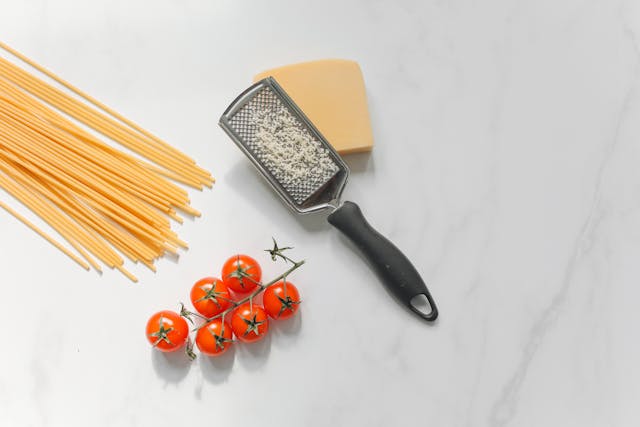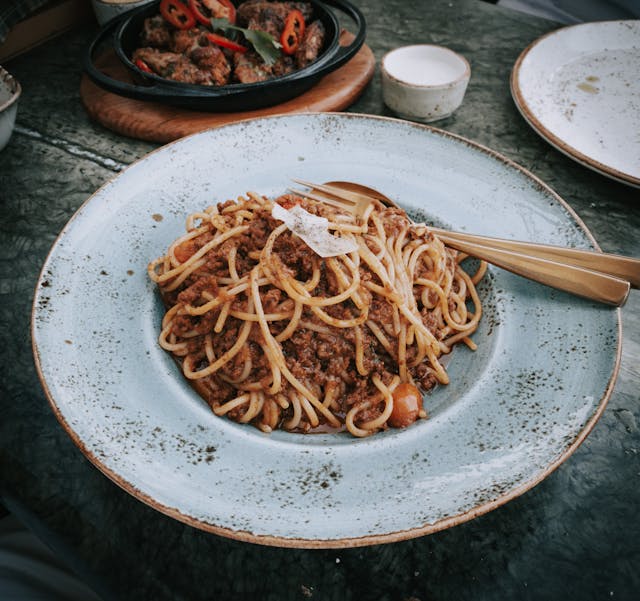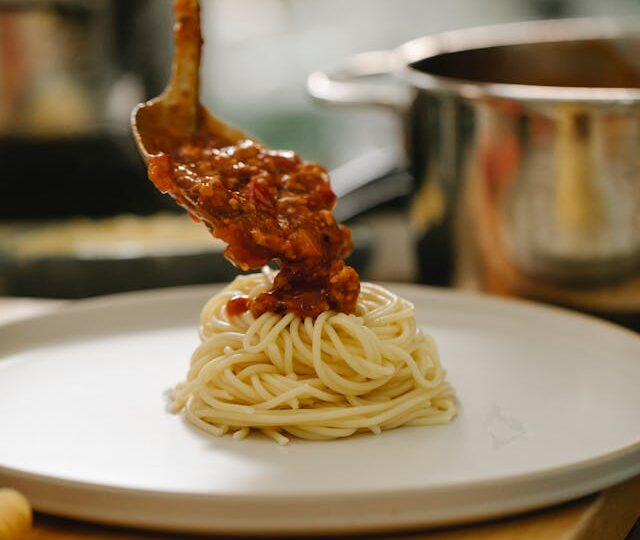When it comes to Italian comfort food, few dishes compare to the rich, hearty flavors of a classic Spaghetti Bolognese. While many versions of this recipe exist, true authenticity lies in the details—using fresh ingredients, cooking with patience, and understanding the heart of the dish. In today’s post, I’m going to walk you through how to make a truly authentic Spaghetti Bolognese, so you can bring the flavors of Italy right into your kitchen. Let’s dive in!
What is Authentic Bolognese?
Before we get into the recipe, it’s important to clarify one thing: traditional Bolognese, also known as ragù alla bolognese, isn’t just a tomato-based meat sauce. It’s a slow-cooked, meat-heavy ragù that originates from Bologna, Italy. The dish is rich and deep in flavor, using a combination of ground meats, a touch of tomato, and milk or cream to create that smooth, creamy consistency. While spaghetti is a popular pasta choice outside of Italy, in Bologna, this ragù is often served with tagliatelle or other broad, flat pastas, which better capture the sauce.
Ingredients for Authentic Bolognese
To make an authentic Bolognese sauce, it’s all about the quality of ingredients and the time you give to the process. Here’s what you’ll need:
Ingredients:
- 1 lb (500g) ground beef (preferably a mix of pork and beef)
- 1 onion, finely chopped
- 2 carrots, finely diced
- 2 celery stalks, finely diced
- 2-3 tbsp olive oil or butter
- 2 garlic cloves, minced
- 1/2 cup dry white wine (optional but recommended)
- 1 cup whole milk
- 1 cup beef or vegetable broth
- 1/4 cup tomato paste (or 1/2 cup canned crushed tomatoes)
- Salt and pepper to taste
- 1 bay leaf
- Freshly grated Parmesan cheese, for serving
- Fresh parsley, for garnish (optional)
- 1 lb (500g) spaghetti or tagliatelle

Step-by-Step Guide to Making Authentic Bolognese
Step 1: Prepare the Vegetables
The foundation of any great Bolognese sauce is a soffritto, an Italian mixture of finely chopped onion, carrot, and celery. Heat the olive oil or butter in a large pan over medium heat, then add the onion, carrot, and celery. Cook slowly, allowing the vegetables to soften and become fragrant. This process should take about 10 minutes, and it’s key to building the depth of flavor in the sauce.
Step 2: Brown the Meat
Once the vegetables are softened, add the ground beef (or the pork-beef mix if using) to the pan. Break the meat apart with a spoon, and cook until browned all over. Make sure not to rush this step; browning the meat properly adds that rich, savory base to your sauce.
Step 3: Add Garlic and Wine
When the meat is browned, stir in the minced garlic, allowing it to cook for just a minute until fragrant. If you’re using wine, now’s the time to add it. Pour in the white wine and let it simmer until most of the liquid has evaporated. The wine adds complexity to the sauce and helps tenderize the meat.
Step 4: Simmer with Milk
Here’s where the magic happens. Stir in the milk and lower the heat to a gentle simmer. Let the sauce cook for about 10-15 minutes, stirring occasionally. The milk adds a creamy richness and balances the acidity from the tomato and wine. Don’t skip this step—this is what gives Bolognese its velvety texture.
Step 5: Add Tomatoes and Broth
Once the milk has been absorbed, stir in the tomato paste or crushed tomatoes, and pour in the broth. Add a bay leaf for extra flavor. Bring the mixture to a simmer, then lower the heat and cover the pot. Allow the sauce to cook gently for at least an hour, preferably two. Stir occasionally, adding more broth if necessary to keep the sauce from drying out. The longer it simmers, the more the flavors develop and deepen.
Step 6: Season and Serve
Once the sauce has thickened and the flavors have melded, season with salt and pepper to taste. Remove the bay leaf, and your Bolognese sauce is ready to serve. While your sauce is finishing up, cook the spaghetti or tagliatelle according to the package instructions.
Step 7: Plate and Garnish
To serve, toss the cooked pasta with the sauce so that each strand is coated with the rich ragù. Top with freshly grated Parmesan cheese and a sprinkle of fresh parsley if desired. Pair with a glass of red wine, and you’ve got an authentic Italian feast!
Tips for the Best Bolognese
- Don’t rush the cooking process. Authentic Bolognese sauce requires time and patience. The longer you let it simmer, the more flavor you’ll develop.
- Use quality ingredients. A good quality ground meat mix and fresh vegetables make all the difference.
- Milk is non-negotiable. It may seem unusual, but milk is essential in giving the sauce its characteristic richness.
- Spaghetti vs. Tagliatelle. While spaghetti is popular, try this sauce with tagliatelle or pappardelle for a more traditional pairing.

Final Thoughts
Making an authentic Spaghetti Bolognese is more than just following a recipe—it’s about embracing the process and savoring the time you spend in the kitchen. When done right, the results are nothing short of comforting and delicious, and I hope this recipe inspires you to give it a try at home.
Why not give this recipe a try and enjoy the delicious results.
Buon appetito!
GertieBlu








